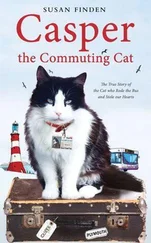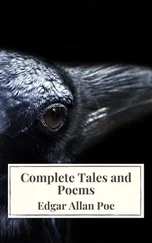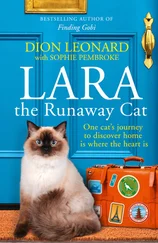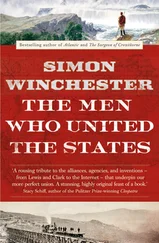OPHELIA FIELD
The Kit-Cat Club

To Paul, and the other members of the Second Hungarian Literary Society
All the good talk over the pies and wine, Congreve's wit, Wharton's fascinating impudence, and Addison's quiet humour, is lost forever without record. The Kit-Cat had no Boswell.
G. M. TREVELYAN, The Times , 10 March 1945
Persons in great Station have seldom their true Characters drawn till several Years after their Deaths. Their personal Friendships and Enmities must cease, and the Parties they were engaged in be at an end…[I]f an English Man considers the great Ferment into which our Political World is thrown at present, and how intensively it is heated in all its parts, he cannot suppose that it will cool again in less than three hundred Years.
JOSEPH ADDISON, The Spectator , no. 101, 25 June 1711
Remember that a free State is only a more numerous and more powerful Club…
SIR WILLIAM JONES, The Principles of Government, in a Dialogue between a Scholar and a Peasant , 1783
Epigraph All the good talk over the pies and wine, Congreve's wit, Wharton's fascinating impudence, and Addison's quiet humour, is lost forever without record. The Kit-Cat had no Boswell. G. M. TREVELYAN, The Times , 10 March 1945 Persons in great Station have seldom their true Characters drawn till several Years after their Deaths. Their personal Friendships and Enmities must cease, and the Parties they were engaged in be at an end…[I]f an English Man considers the great Ferment into which our Political World is thrown at present, and how intensively it is heated in all its parts, he cannot suppose that it will cool again in less than three hundred Years. JOSEPH ADDISON, The Spectator , no. 101, 25 June 1711 Remember that a free State is only a more numerous and more powerful Club… SIR WILLIAM JONES, The Principles of Government, in a Dialogue between a Scholar and a Peasant , 1783
Preface
Prologue - Dryden's Funeral, May 1700
Chapter I - Self-Made Men
Chapter II - Friendships Formed
Chapter III - The Scent of the Pie-Oven
Chapter IV - The Toast of the Town: A Kit-Cat Meeting, 1697
Chapter V - Culture Wars
Chapter VI - The Europeans
Chapter VII - The Whigs Go to War
Chapter VIII - Kit-Cat Connoisseurs
Chapter IX - By Several Hands
Chapter X - The Comeback Kits
Chapter XI - Uneasy Unions: 1707
Chapter XII - Beset
Chapter XIII - Ireland: Kit-Cat Colony
Chapter XIV - The Monopoly Broken: Whig Downfall
Chapter XV - In Their Own Image
Chapter XVI - The Crisis
Chapter XVII - Big Whigs: The First Georgians
Chapter XVIII - Paradise Lost
Chapter XIX - The End of the Club
Chapter XX - Later Clubs and Kit-Cats
Epilogue - Legacies
Notes
Bibliography
List of Members
Index
Acknowledgements
About the Author
From the reviews of The Kit-Cat Club
By the Same Author
Copyright
About the Publisher
A detailed chronology and other additional material may be found at www.opheliafield.com
THE KIT-CAT CLUB existed at a pivotal point in British history, and its members participated prominently in the cultural, constitutional and social revolutions of their times. The Kit-Cat Club's story can therefore be read as a study of how the political stability Britain experienced after 1720 was constructed and defended from the 1690s onwards. For over twenty years—from the aftermath of the Glorious Revolution in 1688, through two long and expensive wars against Catholic France, into the reign of George I after 1714—nearly all roads in British politics and culture led through the Kit-Cat Club, or took their direction in opposition to it.
That is the most objective explanation of why I wanted to write the first full biography of the Kit-Cat Club, but there were other reasons. This is, above all, a book about friendship. Having previously written on a female friendship in the early eighteenth century—the relationship between Queen Anne and her favourite, Sarah Churchill—I wanted to examine the more reticent but equally powerful male friendships of the same period. I was also interested in universal questions of how much we should be in business for ourselves, or how far we should be prepared to broker favours for friends, and nothing could better dramatize these dilemmas than the Kit-Cats' relationships with one another.
Of the fifty-odd Kit-Cat members, I have concentrated on a dozen, and within that dozen, on a literary quintet who are relatively well known today: Joseph Addison, William Congreve, Richard Steele, John Vanbrugh and the publisher Jacob Tonson. This is therefore also a book about being a writer. Those who look back to some hypothetical golden age, before commercialism corrupted the arts, will be consoled by how similar the anxieties of the Kit-Cat authors were to those of many authors today. The Kit-Cat Club existed at the threshold between aristocratic and professional writing, and so developed a form of collective patronage for literary production that was suited to both. I was first drawn to the Kit-Cat authors by the fact that theirs were hardworking writing lives, supplemented by day-jobs and by a sense of wider public duty. I was curious to examine creative lives unprejudiced by the later Romantic cult of the artist, which still has us largely in its thrall.
Richard Steele once called for readers of his paper, The Spectator , to send in descriptions of their working lives, to ‘give a lively Image of the Chain and mutual Dependence of Human Society’. This book traces the chain of dependency that connected the Club's writers and patrons; at times, researching it felt like drawing one of those diagrams in magazines showing how everyone successful in British culture is privately linked to everyone else. As an exposé of such connections, this is also a book about class in Britain. As an immigrant to Britain myself, I share the Kit-Cats' interest in the nature of ‘Englishness’, particularly the origins of the London elite that defines itself by education and cultural appreciation, while my own lack of strong national identity means that those who hold strong communitarian values, whether in relation to a club or a country, always intrigue me.
To write a book about the Kit-Cat Club is to describe a fabulous conversation extending over two decades, not one word of which is reliably recorded. Many of Jacob Tonson's papers were pulped by the 1940s. Addison asked that most of his personal letters be destroyed, and his correspondence with Steele seems to have suffered this fate. Robert Walpole destroyed many of his personal papers and ordered the confiscation and destruction of many left by other Kit-Cat politicians. William Pulteney destroyed papers that might have shed light on the Club's final days. There is, moreover, no surviving rule or minute book for the Kit-Cat Club. Not one regular diarist has emerged from among its members. The Club's authors seldom wrote autobiographically, and when they did, they rarely described interior worlds or private feelings. In this sense, however, a group biography is an apt form for a book about the Kit-Cats: they believed creative forces came from the ‘commerce’ or ‘intercourse’ between men's minds, as opposed to later beliefs in subconscious, individual sources of creativity. They believed that their Club was more, in other words, than the sum of its parts.
Viewing each life through the lens of the Kit-Cat Club is necessarily selective, as every man had many personal and professional relationships, and intellectual influences, unconnected with the Club. While I have occasionally mentioned the most important non-members so as not to skew the historical record, it has been impossible to give every non-Kit-Cat patron, relation, colleague and friend his or her full biographical due. I hope the champions of these figures will forgive me.
Читать дальше













